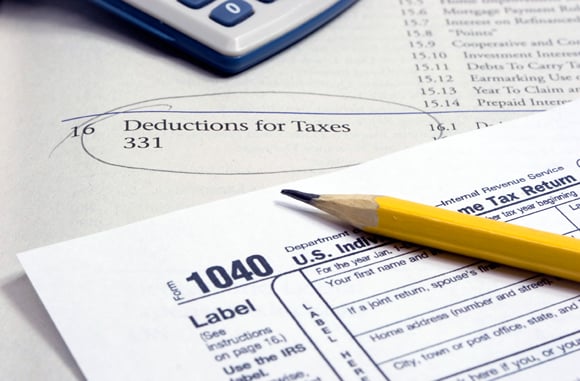Independent analysis shows bulk of tax savings to go to wealthiest filers; 'much less progressive'
The top 0.1 percent of U.S. taxpayers would save an average of $1.4 million in taxes under the economic plan of Republican presidential candidate Tim Pawlenty, according to an independent analysis.
Pawlenty's $11.6 trillion tax-cut plan, which reduces rates on income, capital gains, interest, estates and dividends, is almost three times larger than the proposals endorsed by House Republicans.
Compared with current tax policy, 63.6 percent of U.S. households would receive a tax cut, with most of the remainder experiencing no change. Almost half of the benefits would flow to taxpayers in the top 1 percent of income distribution, or those earning more than $593,011 in 2013.
“It's heavily weighted toward benefits for the wealthy, giving big tax cuts for the wealthy, and it makes the tax system much less progressive,” said Roberton Williams, a senior fellow at the Tax Policy Center in Washington, which conducted the analysis and released it today. The center is a joint venture of the Urban Institute and the Brookings Institution.
In a June 7 speech, Pawlenty called for cutting the top individual tax rate to 25 percent from 35 percent and reducing the top corporate rate to 15 percent from 25 percent. He proposed eliminating taxes on capital gains, dividends, interest and estates and allowing “small businesses” that currently pay taxes at individual rates to pay at the corporate rate.
Cuts for ‘Everybody'
“We reduce taxes for everybody,” Pawlenty spokesman Alex Conant said in an interview today in response to the distributional analysis. “The goal here is to create jobs and grow the economy, and to do that, we needed to reduce taxes on people who were entrepreneurs, small business owners.”
Pawlenty's plan would eliminate corporate tax breaks and retain all individual tax breaks. Pawlenty would expand the 10 percent income tax bracket to cover the first $50,000 of income for individuals and the first $100,000 for married couples.
Compared with fully extending all the tax cuts enacted under President George W. Bush, Pawlenty's plan would cost the government $7.6 trillion in revenue over the next decade, according to the study. Compared with current law, under which the tax cuts will expire at the end of 2012, Pawlenty's plan would cost the Treasury $11.6 trillion in foregone revenue, the study found. The campaign estimates the revenue loss at $2 trillion amid the 5 percent annual economic growth Pawlenty is seeking.
Federal Revenue
The proposed tax cuts in Pawlenty's plan are much larger than those proposed by House Budget Chairman Paul Ryan of Wisconsin and House Ways and Means Chairman Dave Camp of Michigan, both Republicans. They both want to keep federal revenue at the same level it would reach if Congress extended the expiring tax cuts indefinitely. Ryan and Camp have supported top corporate and individual rates of 25 percent, paired with cuts in tax breaks.
The study is imprecise because the researchers made some assumptions that might not match Pawlenty's proposal. For example, the analysis assumes that Pawlenty's plan would eliminate the alternative minimum tax. Conant said he would reduce AMT rates and index the exemption, causing fewer taxpayers to be affected by it than under current law.
Pawlenty, the 50-year-old former governor of Minnesota, said 5 percent annual average economic growth would help make up the revenue gap. Conant said such growth would be driven by the tax plan as well as by spending cuts, regulatory overhaul and monetary policy changes that Pawlenty is proposing.
‘No Silver Bullet'
“Some of our critics are looking at just one segment of it in isolation, and that's sort of missing the point,” Conant said. “There's no silver bullet to our economy. You need a comprehensive plan. That's what we're offering.”
Hitting the 5 percent growth target won't be easy. The U.S. economy hasn't expanded by 5 percent in a single year since 1984.
“If that 5 percent becomes 4, 3, 2 or 1 percent, we're in deep doo-doo,” Pawlenty said during a question-and-answer session after the June 7 speech. “So this isn't about whether some people are going to get wealthier or not. It's about what are those things that we need to do to make it more likely, not less likely, that businesses are going to start, grow, add employees, buy capital equipment, build buildings, conduct research and do all the things it takes to keep a private economy going.”
Conant declined to identify the economists who are advising Pawlenty. The campaign plans to introduce its policy team in the coming weeks, he said.
--Bloomberg News--







